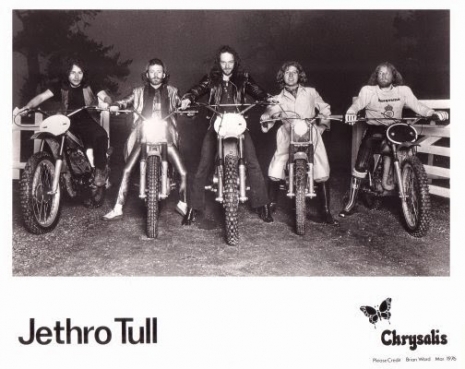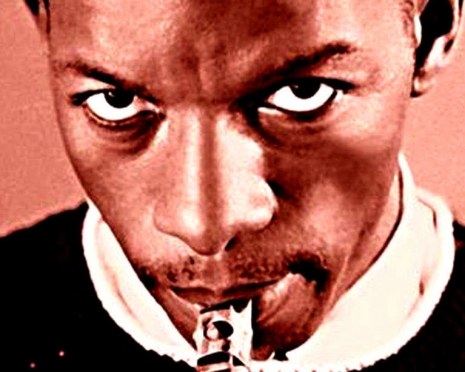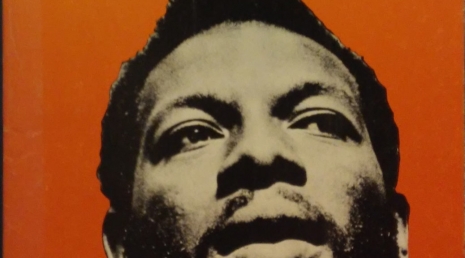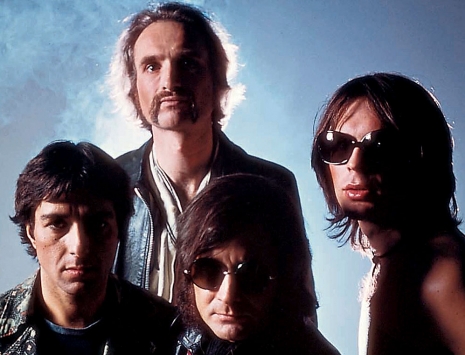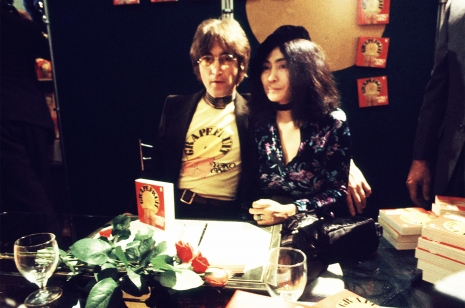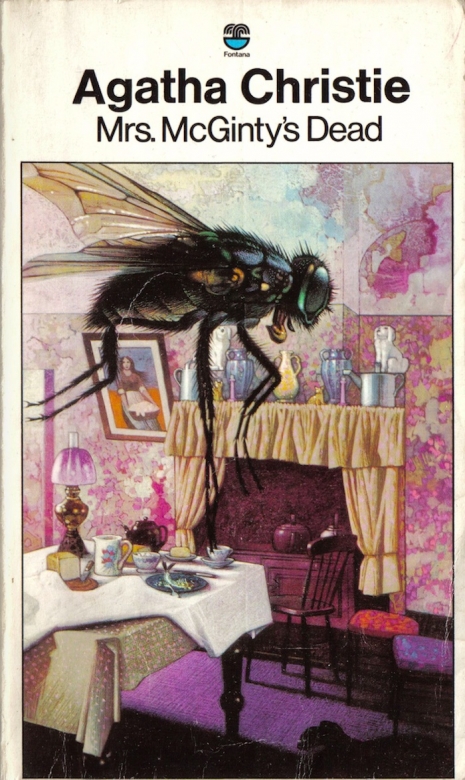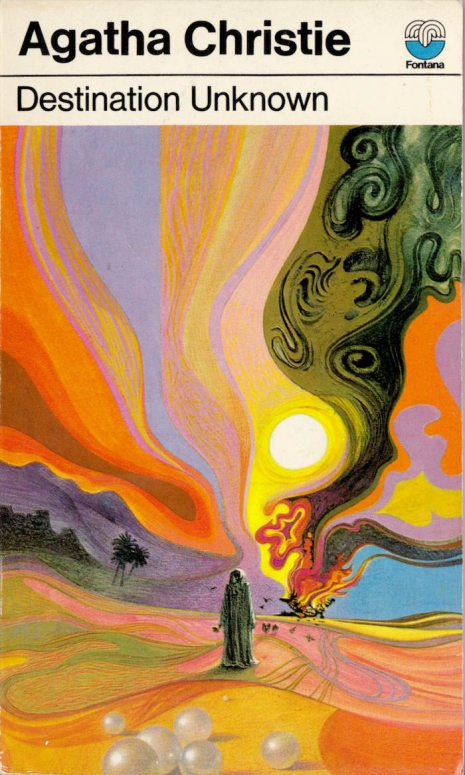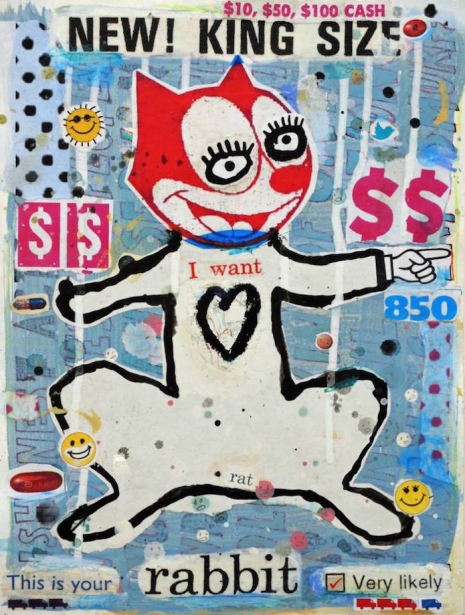
‘Mother’s Little Helper.’
Like. Love. Ha-Ha. Tweet. Share. Post. Walk. Don’t Walk. Keep to the left. Turn clockwise. Open lid carefully. Mind the gap. Wash hands after use. Keep out of the reach of children. At times it seems our lives are dictated by a series of commands and demands that tend to infantilize, curtail our thought, and generally make us, you know, uh, dumb.
American Brian McDonald is a mixed media artist whose work engages the viewer in questioning this ever-increasing noise that fills our existence.
My artwork is driven by a need to make sense of the world around me, which I see as fragmented, contradictory, and anxious. I seek to capture the cartoonishness that runs through American society wherein the individual is not only bombarded by an excess of information, choice, and rampant consumerism but is also in a constant state of wanting more.
He makes beautiful, funny, clever, playful pictures that are part painting and part collage.
Flotsam from this perpetual cycle of consumer pop culture is woven into my paintings, embedding the figures in an intricate web that suggests the non-stop movement of the mind, as well as the depth, complexity, and interconnectedness of life.
His paintings hint towards Dada and early works by David Hockney (We Two Boys Together Clinging) and Andy Warhol (Dick Tracy, Before and After) but with a singularly delightful sense of humor. He says the big influences on his work are “music, cartoons, and dreams” and he is “fascinated with their spatial, temporal and structural components,” which he sees “as analogous to contemporary consciousness.”
He creates his pictures “primarily with layers of paint and collage that are woven together to create a dense network of relationships ripe with narrative possibilities.”
By using disparate and often ambiguous imagery, the flow of ideas is disrupted, meaning is subverted, and logic is obfuscated. My work becomes infused with an elusive visual poetry that seeks to inspire viewers to make their own connections based on personal associations.
Based in San Francisco, McDonald originally studied languages (French and Italian) at university in California and Venice before considering a career as a writer. But that wasn’t what he wanted. He then tried furniture-making but that wasn’t the right fit either. It was only after attending painting classes that he found something that left him “hooked,” something that made him feel he was “making magic.”
It’s like when I hear a particularly beautiful piece of music or read a really great book, or experience any kind of work that deeply resonates with my being… it touches something inside of me, and I almost feel like it’s a connection to God, in a spiritual and not a religious sense.
McDonald has exhibited his work in group shows since 2002 and as a solo artist since 2003. See (or better buy) more of his work here.
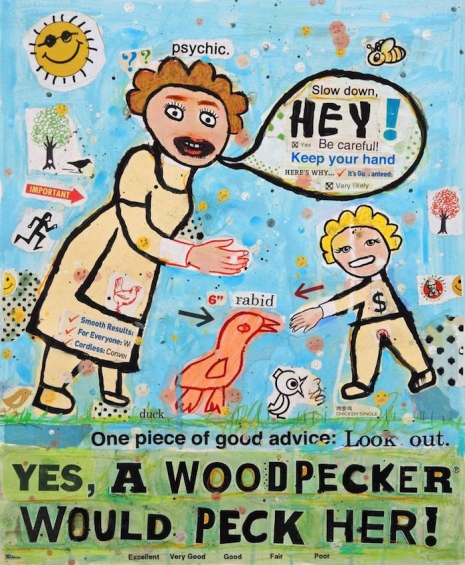
‘Pecking Order.’
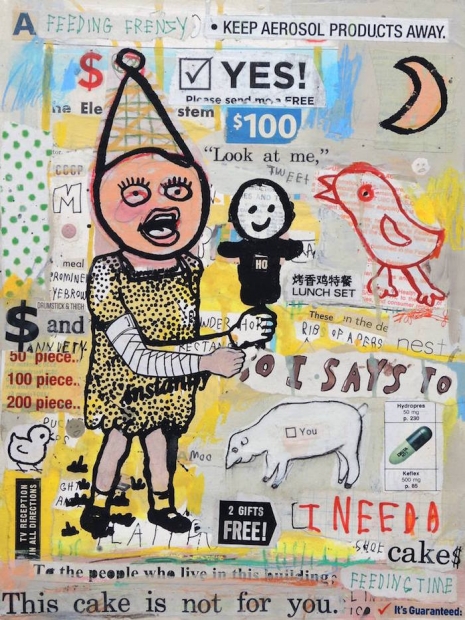
‘Tweet Storm.’
More super-duper pictures, after the jump…







